© 2025 ALLCITY Network Inc.
All rights reserved.

A win in New Jersey, four wins in a seven-game stretch, and hot starts at Madison Square Garden and PPG Paints Arena gave you the impression that the Coyotes might end up being a little better than the bottom-of-the-barrel projections most analysts envisioned for them at the start of the season.
By the time this four-game road trip had concluded with a 6-3 loss in Pittsburgh, however, Arizona had been outscored 17-6 in its final three games and the NHL standings told an undeniable truth: the Coyotes are one point ahead of Montréal for the worst record in the NHL, and they own the league’s worst goal differential; a simple yet historically effective metric for measuring on-ice success.
“I think there’s a lot to like but a lot to learn from our first half of the season,” coach André Tourigny said. “I like the way we stay with it. I don’t like the results, that’s for sure, but the process, I like the way the guys work and what they have in their belly every day when they show up. They show up and show a lot of pride and a lot of character.”
Nobody foresaw the Candiens falling as far and as fast as they have, but the Coyotes are right about where projections had them: a team on track to win between 18 and 20 games. That doesn’t mean that there aren’t notable achievements or disappointments from the first half of the season. Here are 10 of them.
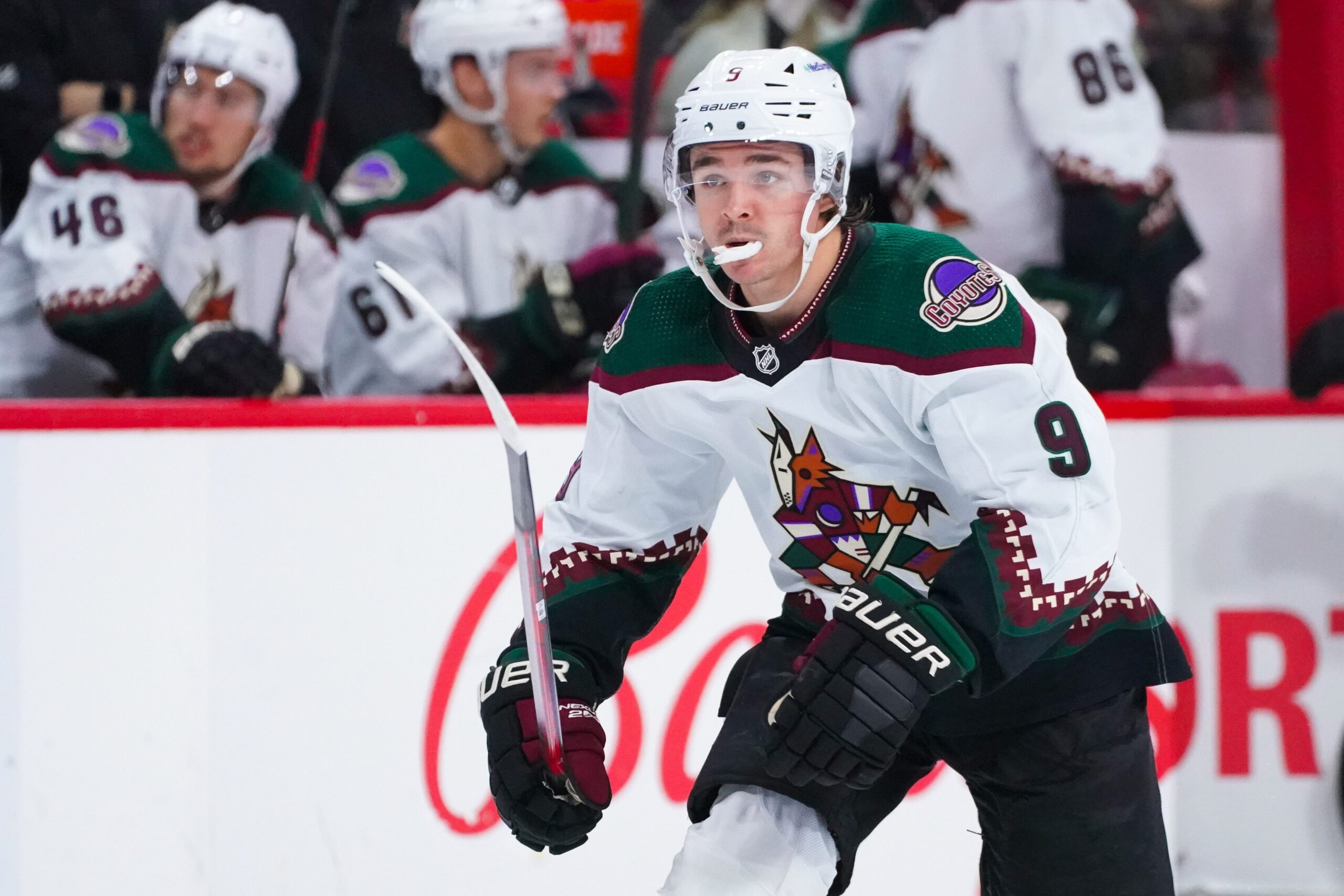
Keller’s maturation
Former coach Rick Tocchet always called Clayton Keller a student of the game; a hockey nerd who spent extra time on the ice and in video sessions to better understand the league and improve his game. Over the past three seasons, Keller just hadn’t been able to put it all together.
Maybe it was just a matter of maturing. Maybe it was those seven pounds of muscle that he added in the offseason. Maybe it was a fresh start under Tourigny, or maybe it was a combination of all of those factors. Whatever the formula, Keller has turned in the most complete performance of his career.
Since a slow start that mirrored the team’s winless October, Keller has 13 goals and 29 points in his past 31 games. He’s playing both special teams, he’s playing late in games with leads and he is finally starting to look like that eight-year, $57.2 million contract may be warranted.
“I think there’s a bigger picture now,” GM Bill Armstrong said. “I think we see him as part of our team when we’re a championship team. We see him as being a part of that and being a driving force.
“He’s cleaned up his game so that he can play in almost every situation, which allows you to play a ton of minutes. That’s where he has an effect because he has the puck the whole time.”
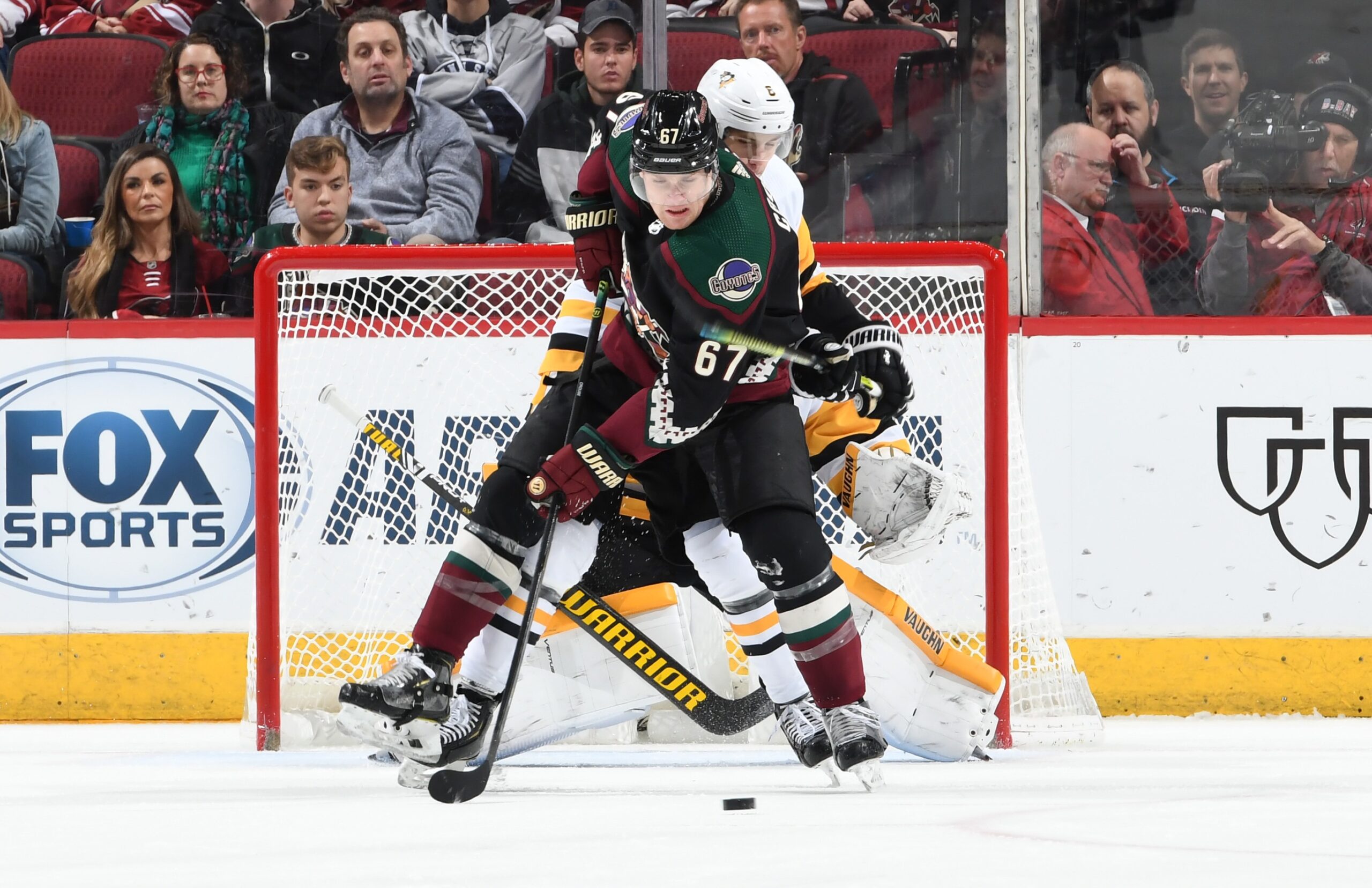
Crouse is a keeper
There has been a lot of trade chatter surrounding Coyotes forward Lawson Crouse recently. On the one hand, you can understand why. Crouse is a big, fast, two-way power forward whose offensive game is beginning to blossom in his fifth full NHL season. As a restricted free agent at the end of the season, he is still cost controlled.
On the other hand, you can forget about all that trade talk. Crouse isn’t going anywhere. The Coyotes don’t have anybody that looks like Crouse in their system so if they were to trade him, the first thing they’d be looking for is his replacement. With his combination of size, skill, speed, and grit, Crouse fits the Armstrong mold for a team perfectly.
With 10 goals and 20 points in 40 games this season, he is on pace for career highs in all meaningful statistical categories. The Coyotes think that there is more in that tank, however, and they intend to see that extra burst occur in a Kachina jersey.
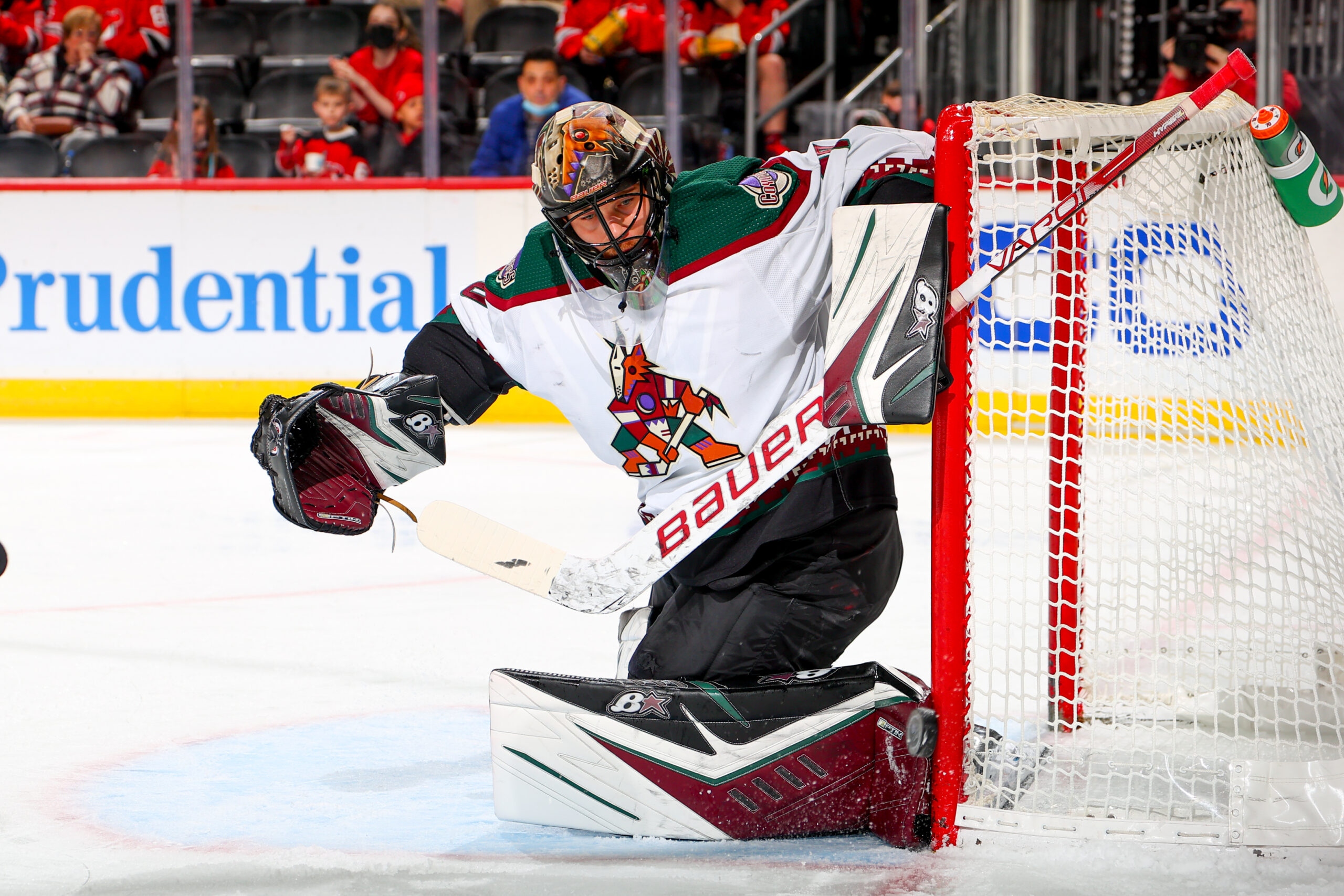
Vejmelka, Moser revelations
Everybody knows that the Coyotes are hoping to land elite prospects over the next two to three seasons in the draft. What Armstrong also hopes is that the Coyotes will acquire enough draft capital and assets that they can fill in the key pieces around that elite talent to build a genuine contender.
It’s far too early to proclaim the signing of goalie Karel Vejmelka and the drafting of defenseman Janis Moser as two of those pieces, but both have shown promise early in their first NHL seasons.
Vejmelka’s numbers (.9.01 save percentage, 3.40 GAA) aren’t helped by the team in front of him, and he must still prove that he can sustain a high level of play over a lengthy stretch when the league assembles a more complete scouting book on him, but he has turned in half a dozen dominant performances and several more quality starts. For a guy who had never played North American hockey, that’s a good start.
Moser (three goals, five points in 14 games) was expected to spend the bulk of the season in Tucson in his first North American season, but injuries and COVID created an opportunity and he hasn’t looked back.
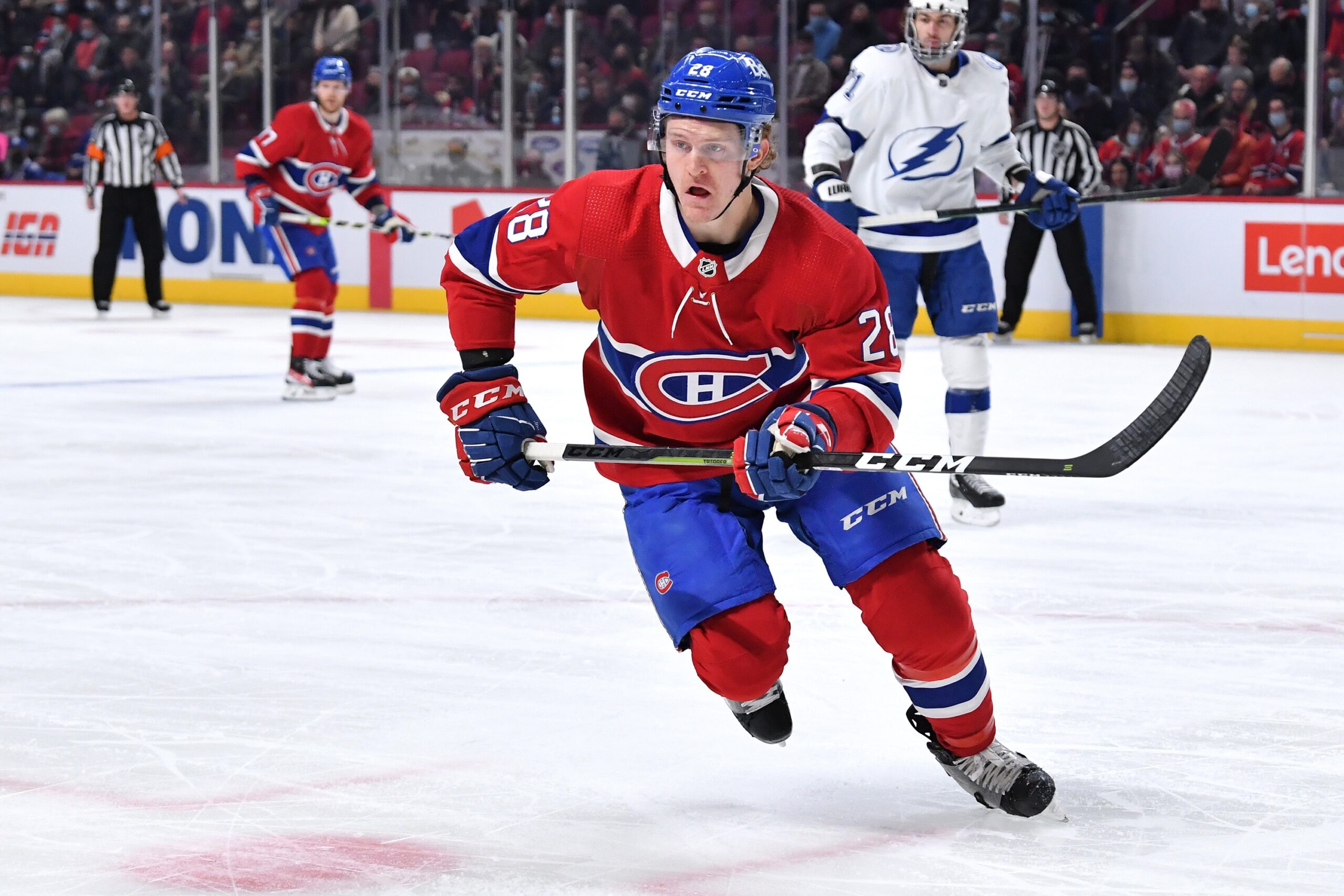
Wright race is crowded
When the Coyotes began the season 0-10-1, it looked as if they would run away in the race for the NHL’s worst record. That may still happen, particularly when Arizona starts selling off players before the March 21 trade deadline, but the Coyotes have some stiff competition for presumed No. 1 overall pick Shane Wright of the Kingston Frontenacs.
Here’s a look at the reverse standings as of Wednesday morning.
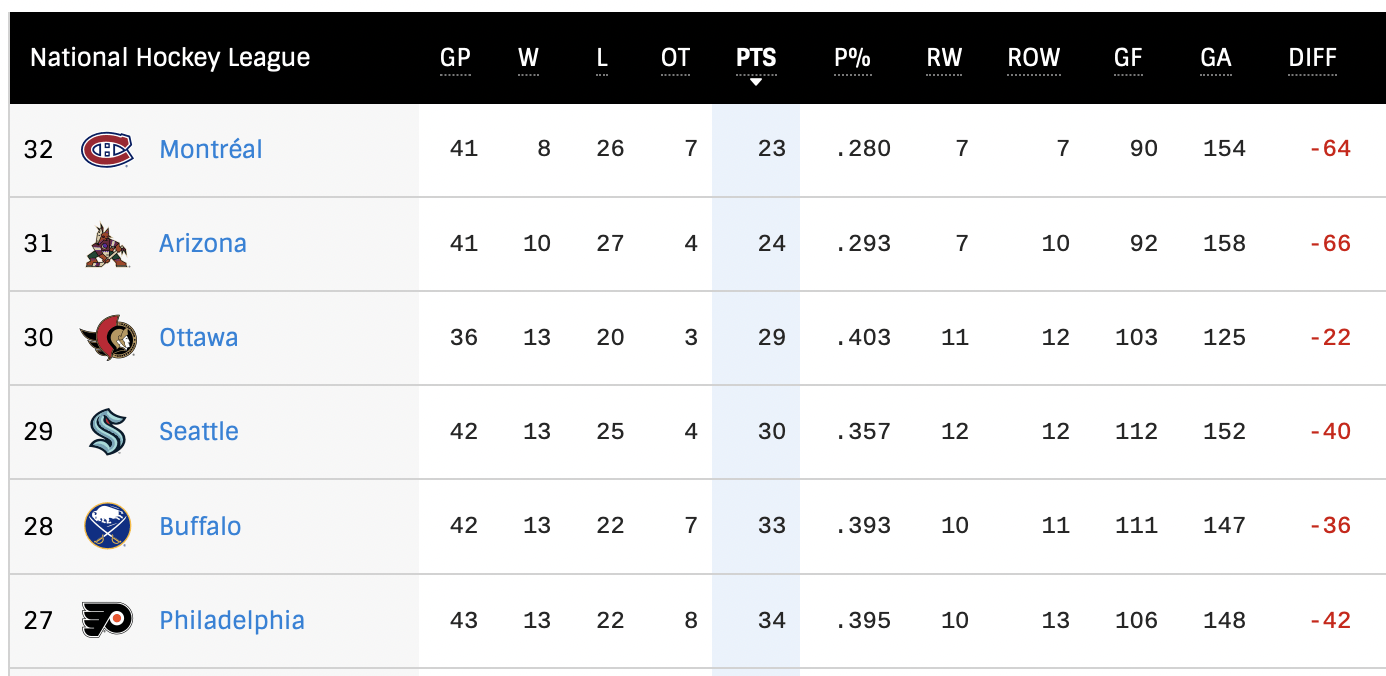
As mentioned above, Montréal hit the midpoint of the season with the league’s worst record, but Ottawa, Seattle, Buffalo and Philadelphia are all within striking distance, and lottery-lucky Edmonton is currently out of the playoff picture.
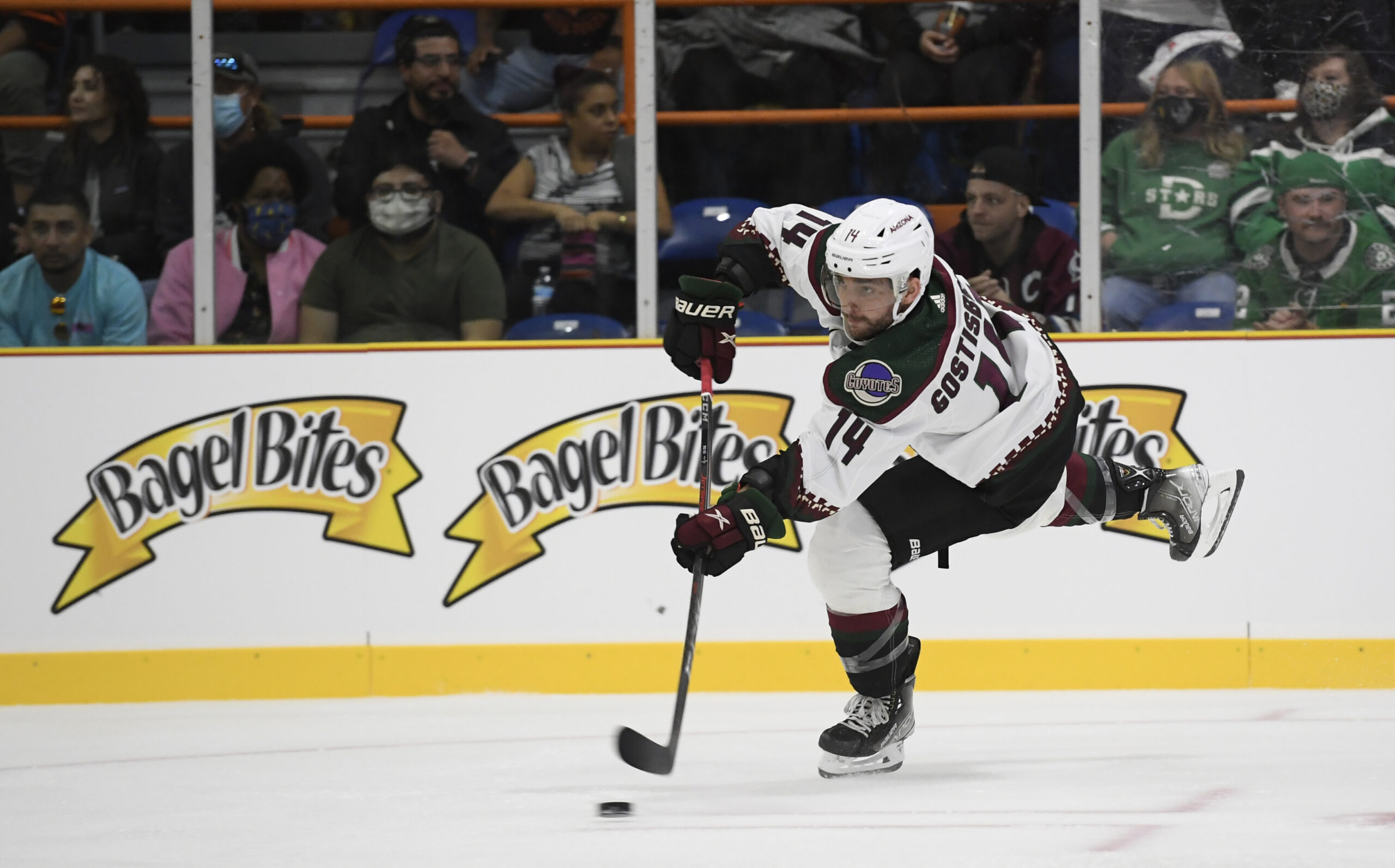
Gostisbehere proving Flyers wrong
Shayne Gostisbehere was a salary dump. Nothing more. The Flyers traded him, a 2022 second-round pick and a 2022 seventh-round pick to the Coyotes this offseason for future consideration ($1).
Whoops.
The Flyers are tanking but Gostisbehere is thriving. He is third on the Coyotes with 26 points, he has the highest expected goals of any defenseman on the team and at age 28, he looks very much like a player with more left in his tank.
Like Crouse, Gostisbehere won’t be on the block at the trade deadline this spring. If he keeps up this pace through next season, however, he could fetch a fair return from a contending team.
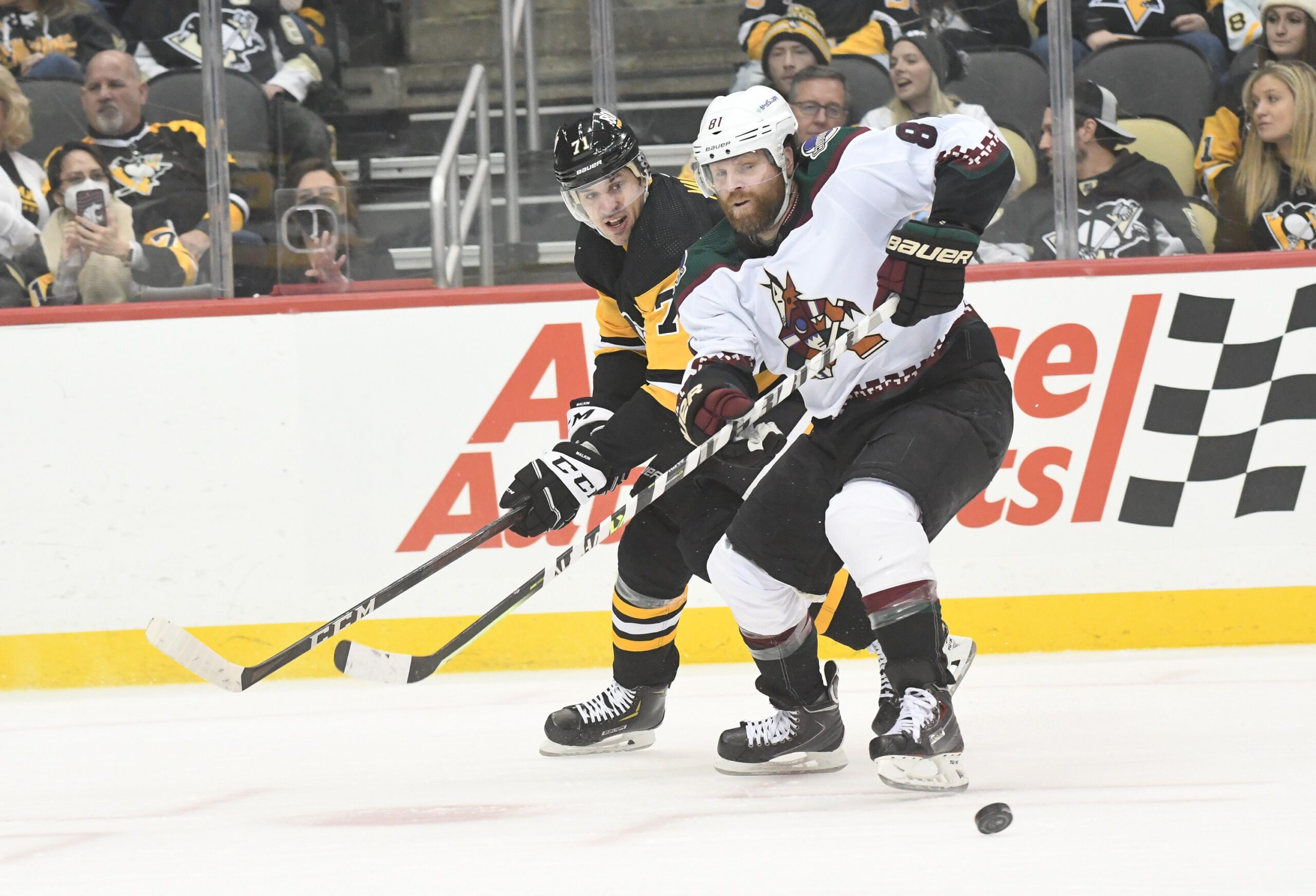
Kessel having best season as Coyote
The Coyotes’ acquisition of Phil Kessel is reminiscent in some ways of their 2002 signing of free-agent forward Tony Amonte. Both were 32 when they played their first game in a Coyotes uniform, both had put up impressive numbers at previous stops, both were in decline, and both played without the benefit of an elite center, muting their potential.
This is not to say that Kessel’s struggles in Arizona have been entirely out of his hands. His work habits and his defensive game will never inspire legends, but Kessel is having his best season as a Coyote this year. He has 27 points in 40 games, putting him on pace for 55.
Cynics will say that he is doing so because this is a contract year and he is trying to facilitate a trade to a contender at the deadline. There may be some truth in that, but Kessel is also beloved by his teammates and genuinely loves playing the game. His Coyotes tenure will ultimately be remembered as a disappointment, but he will soon pass Doug Jarvis for second on the NHL’s all-time consecutive games played list and he is one of the more colorful characters the game has seen.
Phil is Phil. He doesn’t care what you think of him.
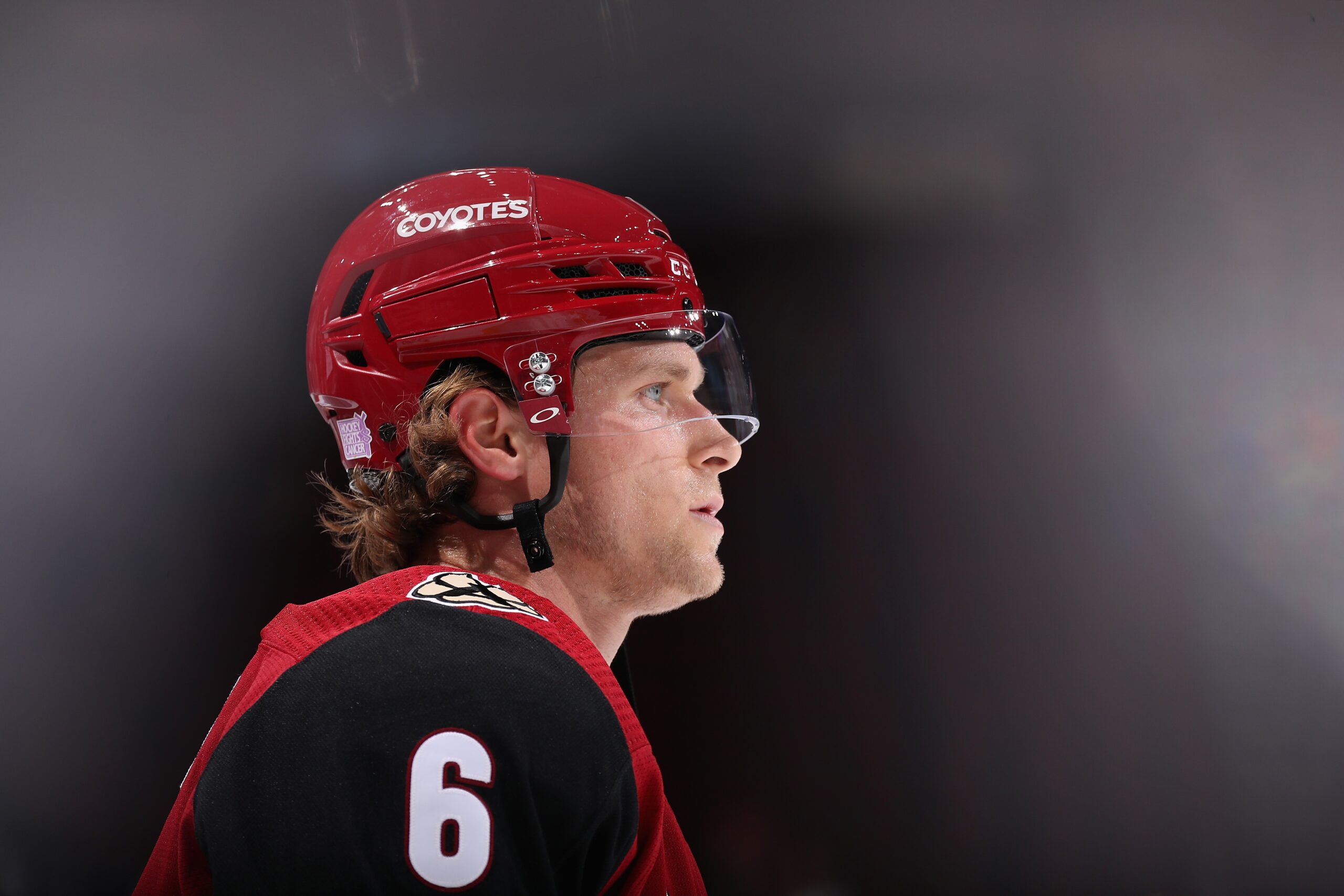
Chychrun, Schmaltz struggle
Chychrun is a league-worst minus-31 — his gaffe at the offensive blue line led to the Penguins’ game-winning goal on Tuesday — he has just two goals and eight points in 30 games and the guy whom everyone assumed would be the cornerstone of the rebuild is the right trade offer away from moving on.
Injuries have hampered Schmaltz’s effectiveness but so has his maddening lack of consistency and desire to impose his elite skating and puck-carrying abilities on opponents. He has four goals and 11 points in 21 games.
Two spectacular goals on Tuesday were a good sign, but the Coyote simply need more from a guy who is under contract for four more years at an average annual value of $5.85 million.
“I’ve been trying to build it since I’ve been back,” Schmaltz said Tuesday. “I think I’m doing a better job away from the puck, tracking. Boydie (Travis Boyd) and Kells do a really good job of that, creating turnovers, so I’m trying to do that as best as I can and then when we get it back, just making that quick play, trying to get pucks to the net and then trying to create some chaos down there.
“Obviously, it’s not the year I wanted with the injuries and stuff so it’s nice to get back in the groove of things, playing on a more regular basis. Once you start doing that I think you get a little more confidence and you just kind of roll with it.”
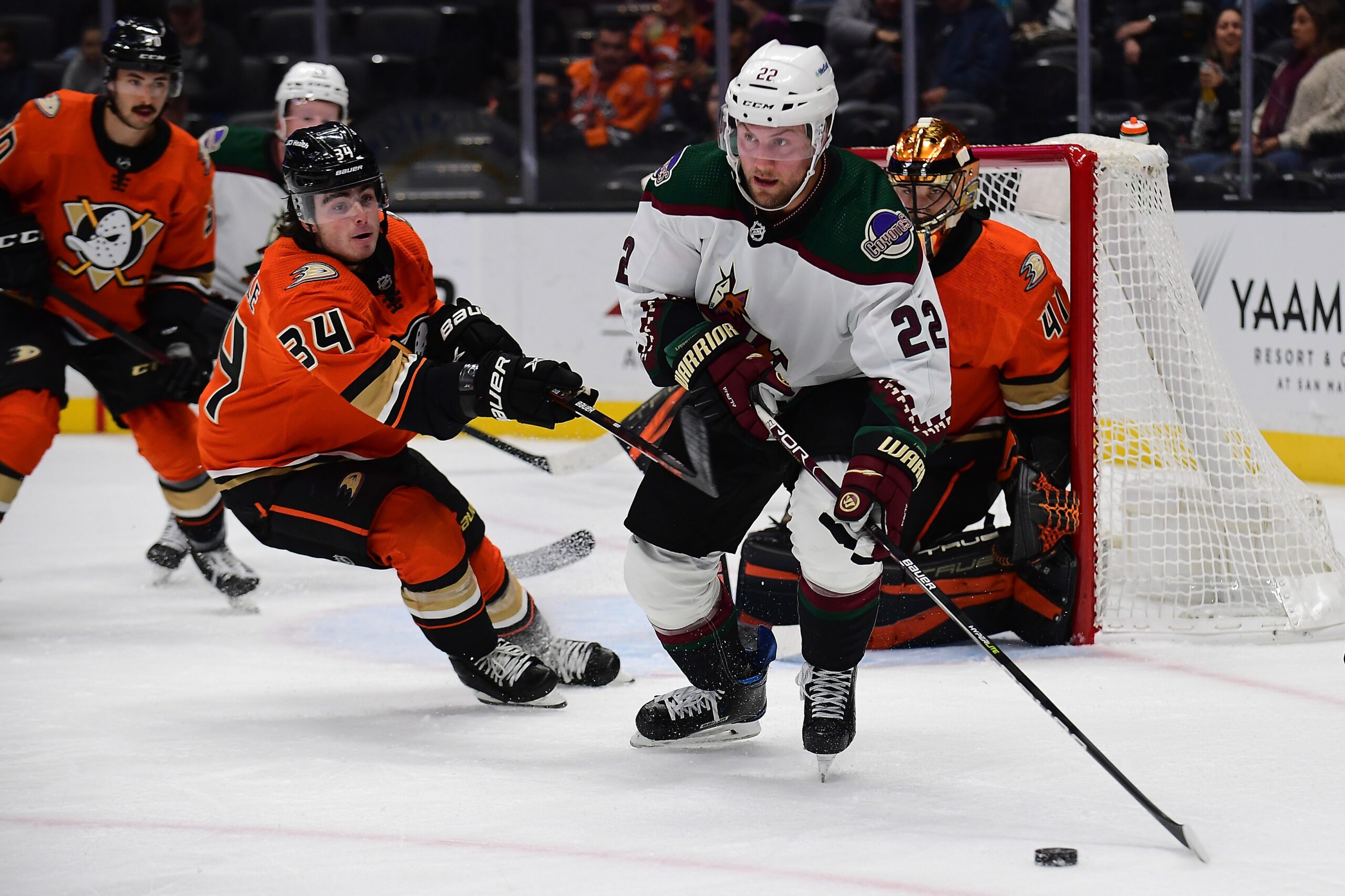
Boyd, Larsson are under-radar deadline chips
If you’re looking for under-the-radar trade deadline possibilities, look no further than Johan Larsson and Travis Boyd. Both play center and teams are always looking for center depth.
Larsson is an underrated defensive player who can sustain a forecheck and bring a valuable dose of toughness to a lineup. Boyd has shown more versatility than anyone thought was possible when he signed in Arizona to little fanfare.
Boyd has already scored a career high 10 goals and he is two points shy of another career high. Larsson is four points shy of his career high of 19 points.
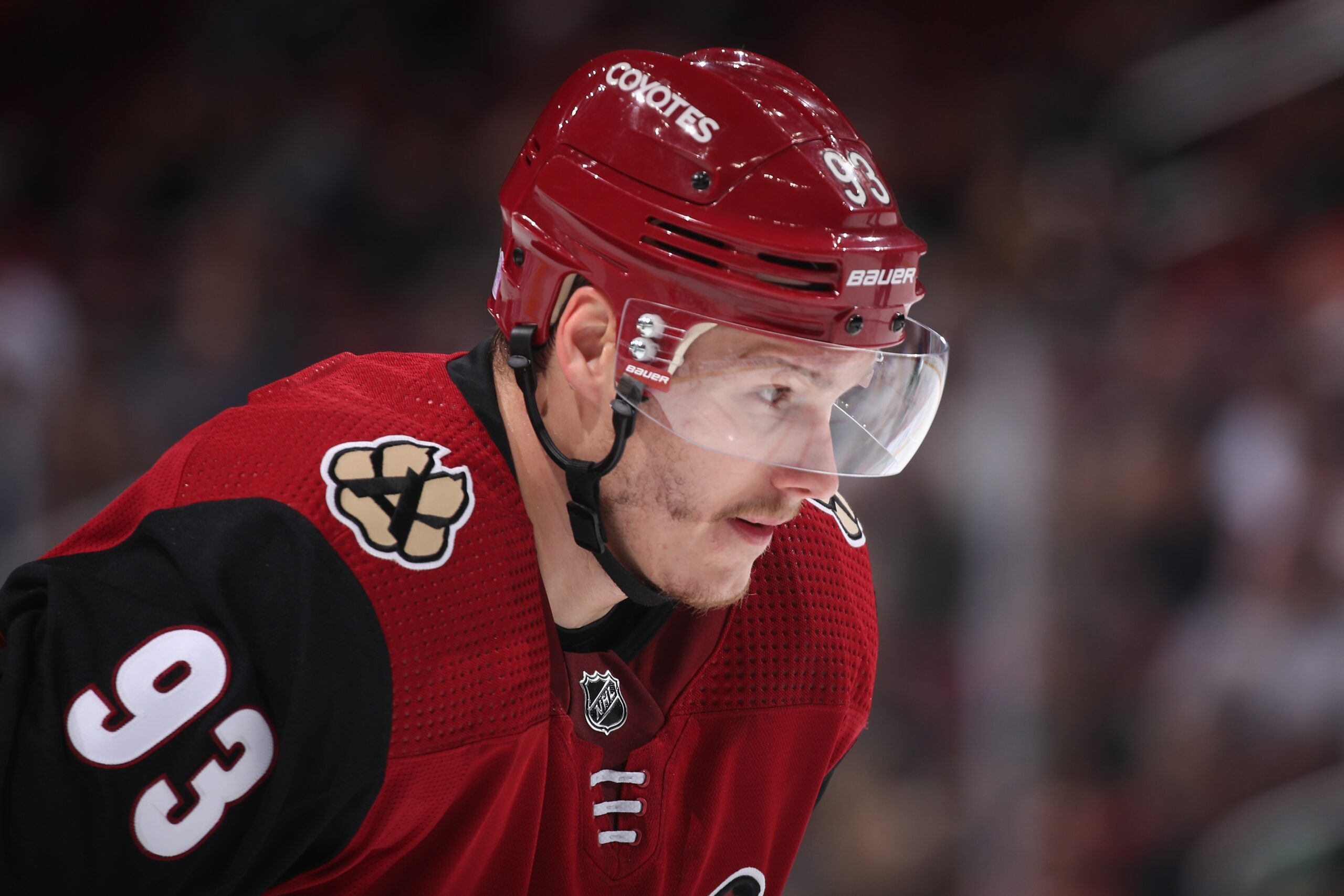
Jaškin signing was a flop
Armstrong was looking for creative ways to augment the Coyotes’ scoring and he had a previous relationship with Dmitrij Jaškin, having been a part of drafting him in St. Louis. Jaškin was big, physical and in his KHL years, he learned the importance of going to the net and the hard areas.
He led the KHL in goals last season (38 in 59 games) and he had 31 the season before. Armstrong figured his style would translate on a lesser level in the NHL, and he knew he had to pay him to convince him to leave Russia.
The gamble didn’t pay off. Jaškin wasn’t a factor in most games, he struggled to find his North American sea legs despite previous NHL experience, and he had only one point before the Predators’ Mark Borowiecki ended his season with a vicious knee-on-knee hit on Nov. 13 in Nashville.
The Coyotes signed Jaškin to a one-year, $3.2 million salary in hopes that he might be a tantalizing trade-deadline acquisition. Insurance will cover most of that salary now that he is injured so the cost didn’t end up hurting Arizona too much. It’s doubtful, however, that the Coyotes will gamble on Jaškin for another season.
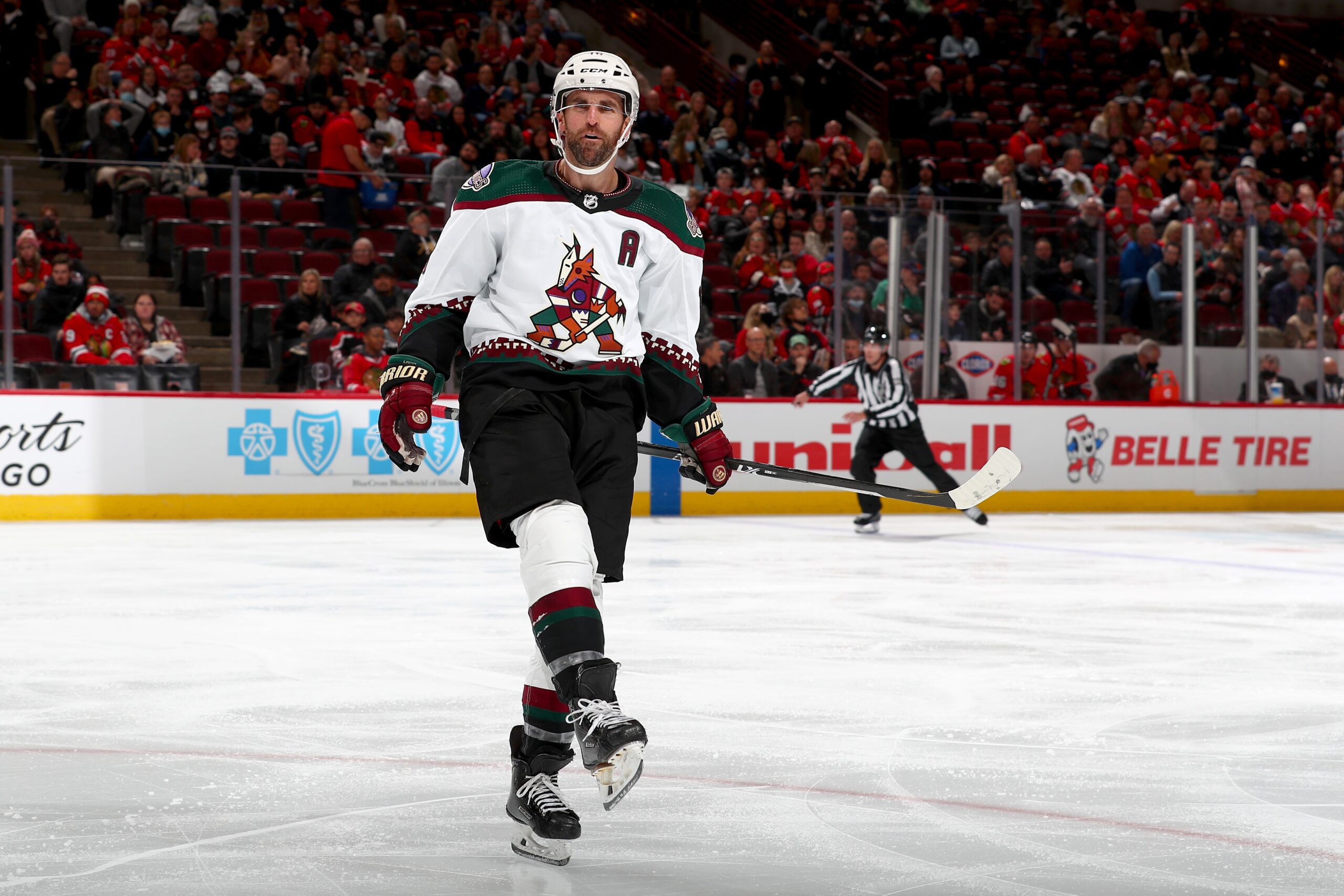
Veterans are as advertised
It’s impossible to know whether this is the end of the NHL line for the salary-dump or bargain-basement veterans such as Andrew Ladd, Anton Strålman, Jay Beagle, Loui Eriksson, Antoine Roussel and Carter Hutton. No matter what comes next for this group, however, it merits mentioning that they have been everything that Armstrong said that they would be.
It would have been something special to cover these players in their primes because they are all introspective, honest, analytical interviews who rarely mail in their answers or offer up the standard NHL clichés.
Reporters are not allowed in the dressing room again this season due to COVID concerns so it’s impossible to verify their impact on the rest of the team. After talking to them on a daily basis, however, it’s hard to question their importance. The rebuild’s stopgap veterans are every bit the positive influence that they were portrayed to be when Armstrong acquired them in the offseason.
Follow Craig Morgan on Twitter
Comments
Share your thoughts
Join the conversation



